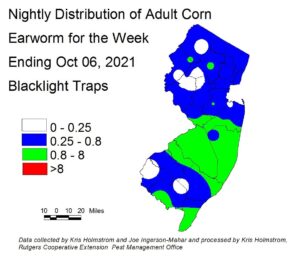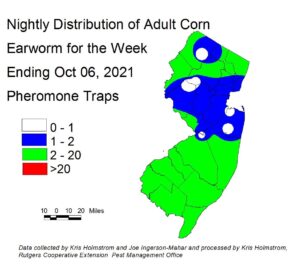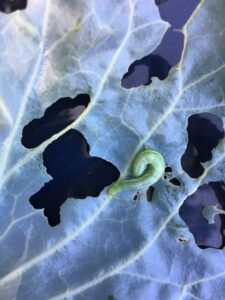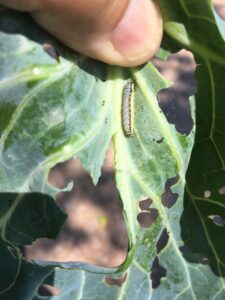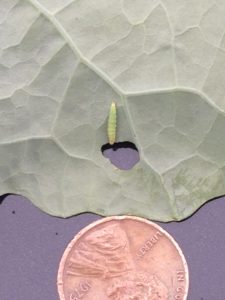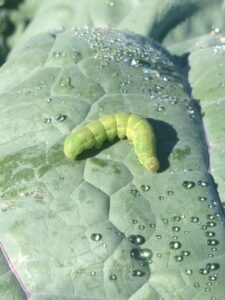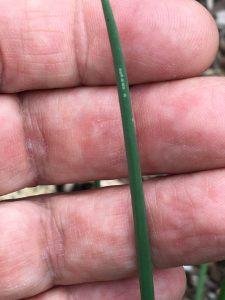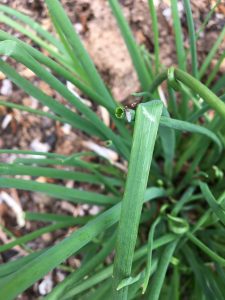Alternaria leaf spot has been reported on broccoli this week. Weather conditions for the development of both diseases has been ideal. Preventative control is recommended and growers should scout and apply protectant fungicides on a regular basis. Note, if Downy mildew is present use downy mildew specific fungicides in conjunction with fungicides for Alternaria leaf spot control. For more information on controlling Alternaria and Downy mildew, please see the 2020/2021 Commercial Vegetable Production Recommendations.
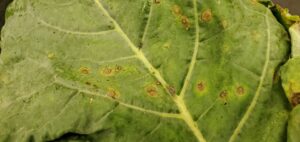
Alternaria leaf spot infection. Note the yellow halo around each spot. Under ideal conditions black concentric rings will develop within each spot. These rings are the conidia which are then spread causing new leaf spots to develop.
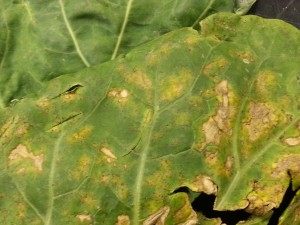
Symptoms of downy mildew on infected chinese cabbage leaf. Note the irregular chlorosis and browning of upper leaf surface. Under ideal conditions the pathogen will produce white spore masses only on the undersides of the leaf.
